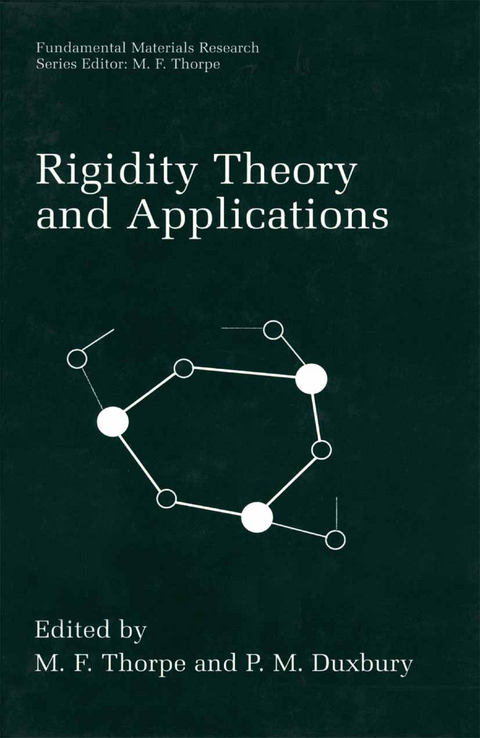
Rigidity Theory and Applications
Kluwer Academic/Plenum Publishers (Verlag)
978-0-306-46115-6 (ISBN)
Rigidity Theory.- Generic and Abstract Rigidity.- Rigidity of Molecular Structures: Generic and Geometric Analysis.- Tensegrity Structures: Why are They Stable?.- The Role of Tensegrity in Distance Geometry.- Applications to Networks.- Comparison of Connectivity and Rigidity Percolation.- Rigidity Percolation on Trees.- Rigidity as an Emergent Property of Random Networks: A Statistical Mechanical View.- Granular Matter Instability: A Structural Rigidity Point of View.- Rigidity and Memory in a Simple Glass.- Constraint Theory, Stiffness Percolation and the Rigidity Transition in Network Glasses.- Topologically Disordered Networks of Rigid Polytopes: Applications to Noncrystalline Solids and Constrained Viscous Sintering.- Rigidity Constraints in Amorphization of Singly- and Multiply-Polytopic Structures.- Floppy Modes in Crystalline and Amorphous Silicates.- Generic Rigidity of Network Glasses.- Rigidity Transition in Chalcogenide Glasses.- Rigidity, Fragility, Bond Models and the “Energy Landscape” for Covalent Glassformers.- Entropic Rigidity.- Applications to Proteins.- Molecular Dynamics and Normal Mode Analysis of Biomolecular Rigidity.- Efficient Stochastic Global Optimization for Protein Structure Prediction.- Flexible and Rigid Regions in Proteins.- Flexibly Screening for Molecules Interacting with Proteins.- Studying Macromolecular Motions in a Database Framework: From Structure to Sequence.
| Reihe/Serie | Fundamental Materials Research |
|---|---|
| Zusatzinfo | 85 Illustrations, black and white; XI, 432 p. 85 illus. |
| Verlagsort | New York |
| Sprache | englisch |
| Maße | 178 x 254 mm |
| Themenwelt | Informatik ► Theorie / Studium ► Algorithmen |
| Technik ► Maschinenbau | |
| ISBN-10 | 0-306-46115-3 / 0306461153 |
| ISBN-13 | 978-0-306-46115-6 / 9780306461156 |
| Zustand | Neuware |
| Informationen gemäß Produktsicherheitsverordnung (GPSR) | |
| Haben Sie eine Frage zum Produkt? |
aus dem Bereich


